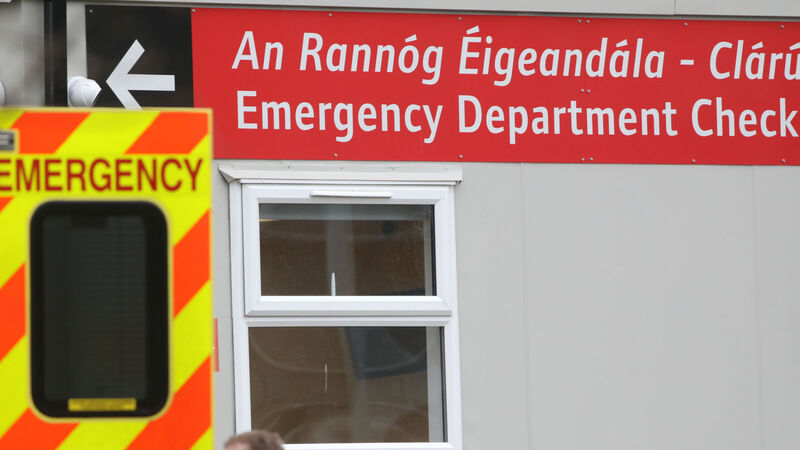Study highlights the scale of unnecessary attendances at EDs

Many people who present themselves as patients to emergency departments could be treated elsewhere if more alternative facilities were made available and if there was greater knowledge of those that already exist.
Up to a third of people attending the country's emergency departments with non-emergency conditions do not need to be there according to a new study led by the University of Limerick.
Furthermore many could have been treated elsewhere if more alternative facilities were made available and if there was greater knowledge of those that already exist.
GPs and emergency medicine consultants, who analysed patient charts from five hospitals, found 11% to 38% of lower-acuity conditions could be treated by a GP within 24 to 48 hours.
They also found 18% to 35% of these cases could be considered as not needing to have gone to an emergency department.
For patients who did need the ED, the admission rate was 47% compared to 0% for those who could have gone elsewhere. However, they could not reach agreement on whether they needed to be there or not on 45% of the charts.
Dr Niamh Cummins, associate professor in public health at the University of Limerick, said overcrowding in emergency departments is a “significant issue” in Ireland and internationally.
“Unfortunately it is associated with poorer patient outcomes, and increased mortality rates,” she said.
The study was looking for “avoidable presentations or non-urgent presentations”, she said.
“The lack of agreement suggests that efforts we are making to divert patients away from the ED might not be successful, because the clinicians themselves do not agree on the optimal destinations,” she said.
“Self-assessment of patients is challenging for themselves,” she also said.
This study is part of a series called 'Better Data, Better Planning', and follows a recently published paper on ED patients from their perspective.
“Actually 48% of the patients surveyed didn’t consider their condition to be an emergency,” she said.
They found “60% of patients were aware of out-of-hours GP services. So 40% that aren’t aware is quite a significant amount,” she said.
Overall both studies showed the reasons for going to an ED can be “very complex”, she added.
“The problem is really the ED is the safety net for the entire health service, and that safety net is now stretched to breaking point,” she said adding that investment is needed across the system.
She also said: “I do think public education is important, and potentially a national campaign to highlight alternative care-pathways to the ED, to highlight the fact the patients can attend their pharmacist, their GP, public health nurse, allied health professionals,” she said.
“I think that is important so we are increasing the awareness that there are other options (for some).”









![Johnny_Stephens_Photography-02-425A6831-Edit[1].jpg Restaurant review: The Ivy Asia is an assault on all five senses — I hated it](/cms_media/module_img/9752/4876311_6_teasersmall_Johnny_Stephens_Photography-02-425A6831-Edit_5b1_5d.jpg)

